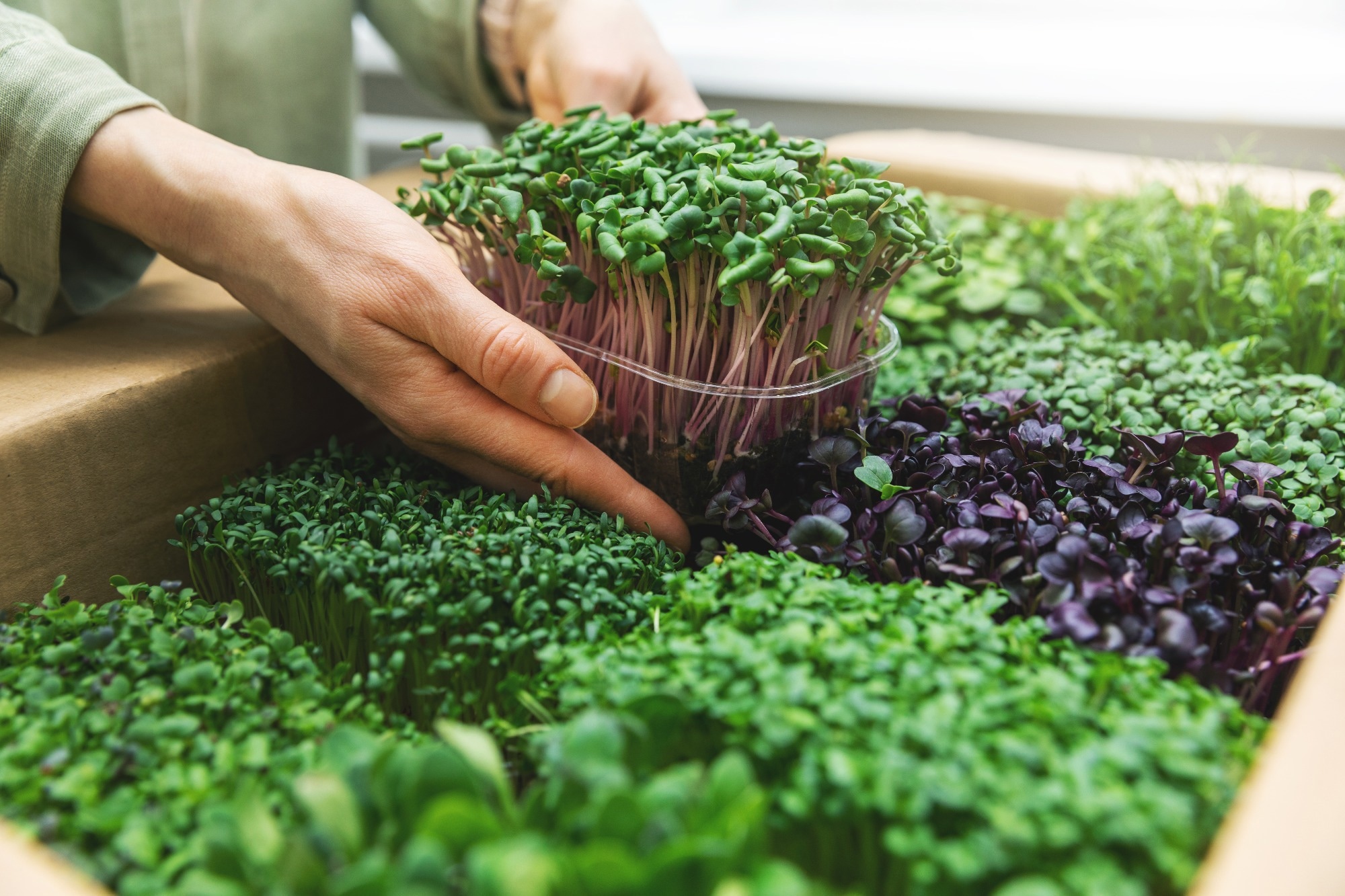Exploring Microgreens: Nutrient-Rich Superfoods You Can Grow at Home
Welcome to the vibrant world of microgreens, where tiny plants pack a powerful punch of nutrients and flavour! If you're someone who loves the idea of cultivating your own fresh produce but lacks the time or space for a full-fledged garden, microgreens might just be your new best friend. These miniature greens are not only incredibly easy to grow at home but also offer a plethora of health benefits that can elevate your meals to new heights. So, let's dive into the fascinating realm of exploring microgreens: nutrient-rich superfoods you can grow at home.
What Exactly Are Microgreens?
Microgreens are essentially young vegetable greens harvested just after the cotyledon leaves (the first leaves to appear when a seed sprouts) have developed. They are smaller than baby greens and larger than sprouts, typically measuring anywhere from one to three inches in height. Despite their diminutive size, microgreens are bursting with flavour and nutrients, making them a popular choice among health-conscious individuals and culinary enthusiasts alike.
Key Aspects of Microgreens
1. Nutrient Density:
One of the most remarkable features of microgreens is their exceptional nutrient density. Studies have shown that these tiny greens can contain up to 40 times more vitamins, minerals, and antioxidants than their fully-grown counterparts. For example, red cabbage microgreens have been found to contain significantly higher levels of vitamin C and carotenoids than mature red cabbage leaves.
2. Versatility:
Microgreens come in a wide variety of flavours, ranging from spicy arugula to tangy mustard greens to earthy beet shoots. This diversity allows you to experiment with different flavours and textures in your cooking, adding depth and complexity to your dishes. Whether you're tossing them into salads, garnishing soups, or layering them on sandwiches, microgreens are sure to lend a fresh and vibrant touch to any meal.
3. Ease of Cultivation:
One of the greatest appeals of microgreens is their ease of cultivation, even for those with limited gardening experience or space. Unlike traditional garden vegetables, microgreens can be grown indoors year-round, requiring minimal equipment and maintenance. All you need are some seeds, a shallow tray or container, potting soil, and a sunny windowsill or grow light. Within just a few weeks, you'll be harvesting your own nutrient-packed greens right from the comfort of your kitchen.
4. Quick Turnaround:
Another advantage of microgreens is their rapid growth rate. Most varieties can be harvested within two to three weeks of planting, allowing you to enjoy a continuous supply of fresh greens throughout the growing season. This quick turnaround time makes microgreens an ideal choice for impatient gardeners or anyone looking for instant gratification.
Relevance of Microgreens in Today's World
In an era where the importance of fresh, nutritious food is increasingly emphasized, microgreens offer a convenient and sustainable solution to the challenge of eating healthily. With concerns about food security, environmental sustainability, and the nutritional quality of our diets on the rise, growing your own microgreens at home provides a practical way to take control of what you eat and reduce your carbon footprint.
Moreover, the versatility of microgreens makes them well-suited to a wide range of dietary preferences and restrictions, including vegan, vegetarian, gluten-free, and paleo diets. Whether you're looking to boost your intake of vitamins and minerals, add a burst of flavour to your meals, or simply enjoy the satisfaction of growing your own food, microgreens offer something for everyone.
Anecdotes and Examples
To illustrate the appeal of microgreens, let me share a personal anecdote. A few years ago, I decided to try my hand at growing microgreens on a whim, curious to see if the hype surrounding these tiny greens was justified. Armed with a packet of seeds and a shallow tray, I embarked on my gardening experiment with equal parts excitement and scepticism.
To my delight, the process turned out to be remarkably simple and rewarding. Within days, tiny green shoots began to emerge from the soil, reaching eagerly toward the sunlight streaming in through my kitchen window. As the days passed, the greens grew taller and more vibrant, transforming from mere seedlings into miniature forests of flavour.
I remember the first time I harvested my homegrown microgreens, snipping them carefully with a pair of scissors and marvelling at their tender leaves and delicate aroma. From that moment on, I was hooked. Not only did I enjoy the satisfaction of nurturing my own little garden, but I also relished the opportunity to incorporate fresh, nutrient-rich greens into my meals every day.
Conclusion
In conclusion, exploring microgreens is a journey worth embarking on for anyone passionate about good food and sustainable living. These pint-sized powerhouses offer a wealth of nutritional benefits, culinary possibilities, and gardening joys that are sure to delight and inspire. Whether you're a seasoned gardener or a novice enthusiast, growing microgreens at home is a rewarding experience that connects you to the simple pleasures of nature and nourishment.
So why not roll up your sleeves, grab a handful of seeds, and join the microgreens revolution today? Your taste buds, your health, and the planet will thank you for it. Happy growing!







Comments
Post a Comment